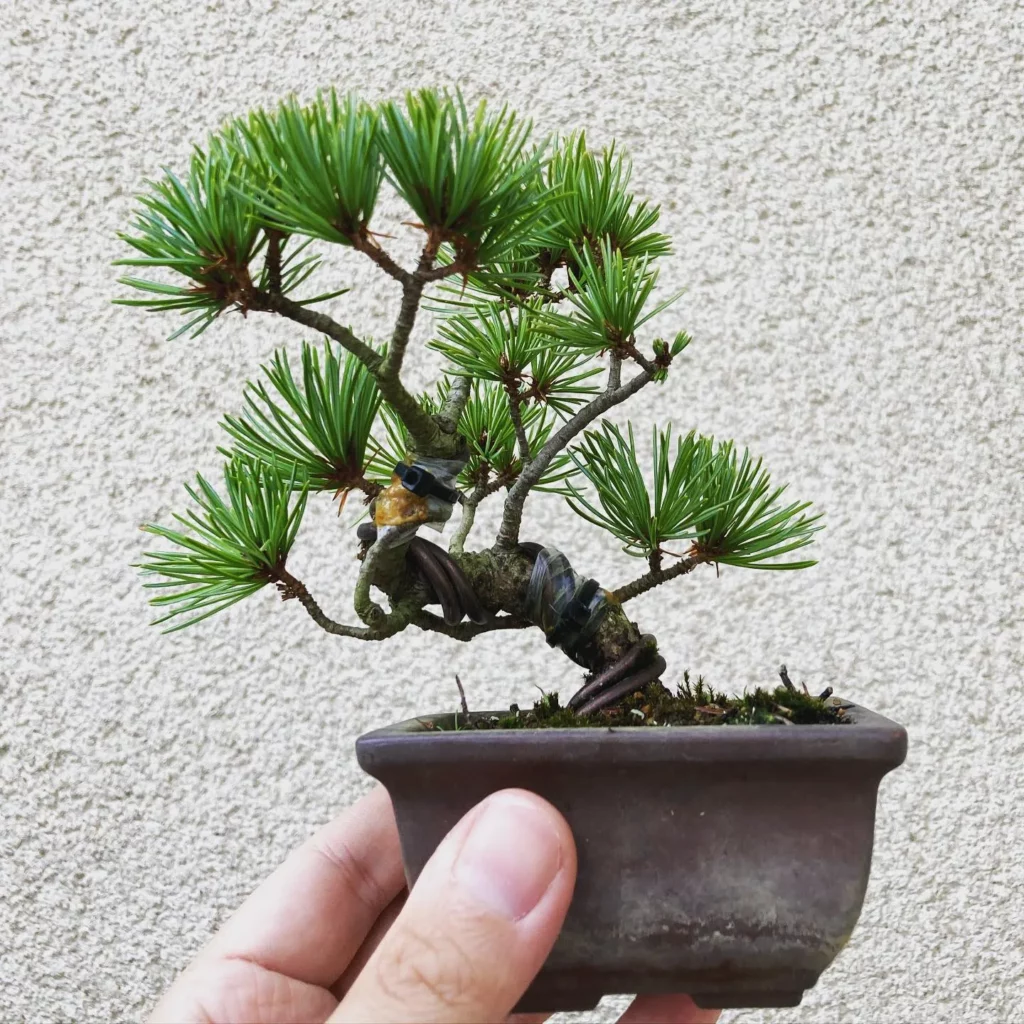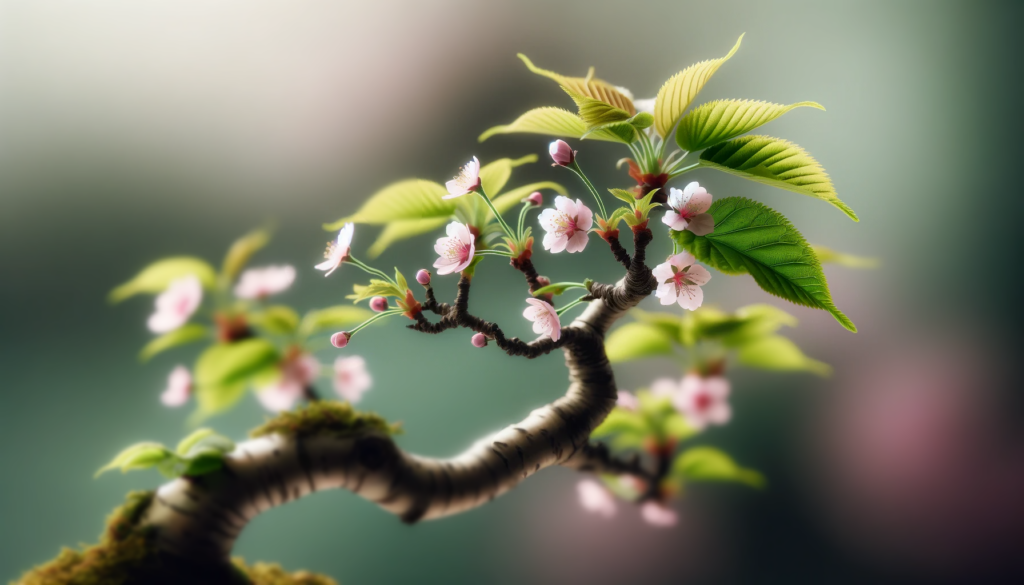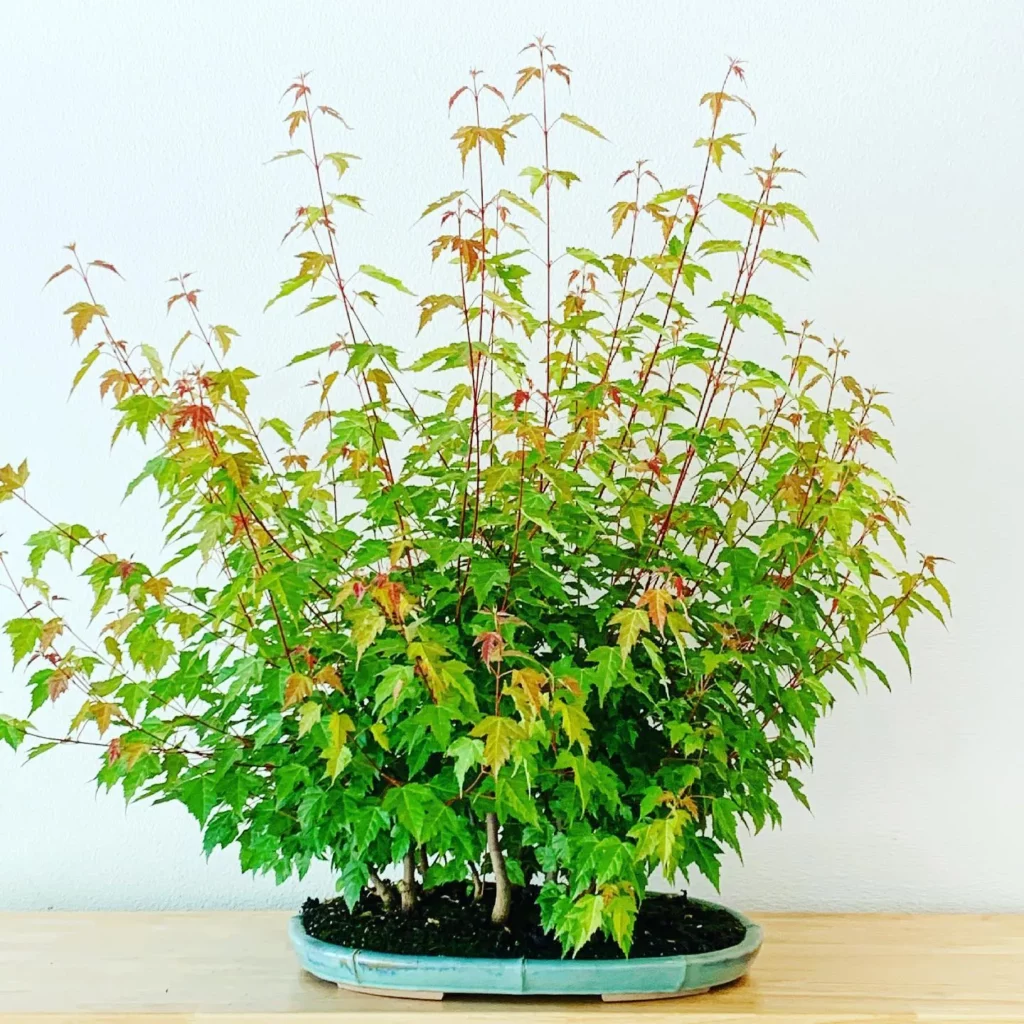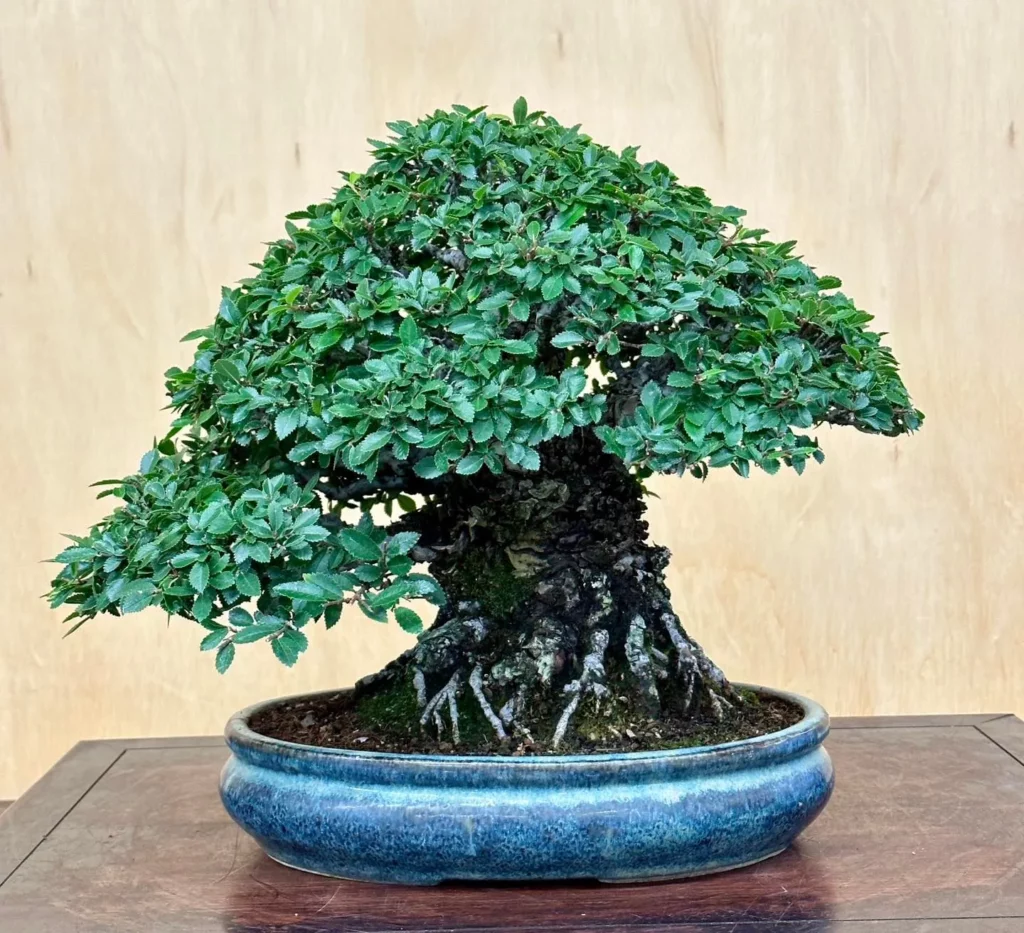One essential aspect of bonsai cultivation is nebari, the intricate network of roots that enhance the aesthetics and stability of these remarkable creations. In this article, we will explore the importance of nebari in bonsai, its role in enhancing the overall form and beauty of the trees, and the techniques to cultivate strong and visually striking nebari. Join us on this journey as we delve into the art of enhancing roots for stunning bonsai form.
What is Nebari?
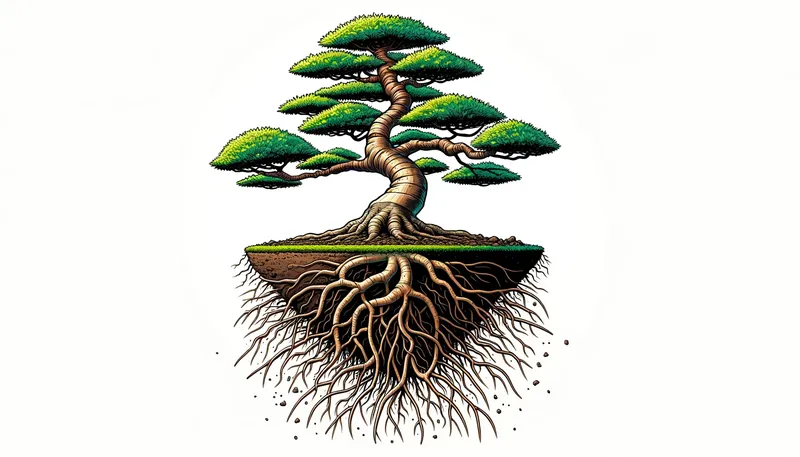
Nebari, a Japanese term, refers to the visible portion of the roots as they emerge from the soil. It includes both the surface roots and the way the tree flares out at the base. Nebari creates stability and greatly influences the perceived age of a bonsai tree.
Here are some important factors to consider when evaluating nebari:
- Nebari should radiate out from the trunk at the same level, creating a balanced and harmonious look.
- The roots should grip the soil without any gaps, ensuring a strong foundation for the bonsai.
- The thickness and evenness of the roots contribute to the overall aesthetic appeal of the tree.
- Tapering, where the roots gradually decrease in size as they go away from the trunk, adds elegance and naturalness to the nebari.
The Importance of Nebari in Bonsai Cultivation
Nebari is a critical aspect of bonsai cultivation, as it serves as an indicator of the tree’s overall health and vitality. In bonsai, nebari refers to the visible roots that spread out at or just below the soil’s surface. It is essential for establishing a strong foundation, balance, and harmony between the roots and branches of the tree.
Having a well-developed nebari adds dimensionality and creates the impression of natural growth in bonsai trees. It significantly contributes to the overall aesthetic appeal of the tree, making it visually captivating and engaging.
However, developing an attractive nebari is a time-consuming process that requires patience and proper cultivation techniques. It can take years or even decades to achieve a fully mature and appealing nebari.
Importance of Proper Root Development
Proper root development is crucial for young bonsai plants to establish a strong and healthy nebari. Careful handling is required to ensure that the roots grow in a desirable manner. This involves selecting the right pot or tray size and shape to encourage proper root spread. Additionally, choosing the appropriate soil mix that promotes healthy root growth is essential.
Weak and underdeveloped roots can lead to instability in the bonsai tree, affecting its overall aesthetic quality. It is vital to provide the necessary care and attention to young plants to promote optimal root development and cultivate a strong nebari.
Choice of Pots or Trays and Soil Mixes
The choice of pots or trays and soil mixes is critical when cultivating nebari in bonsai. The size and shape of the container can influence root spread and overall nebari development. Selecting a pot or tray that allows for ample root growth and has proper drainage is essential. It is also important to use a well-balanced soil mix that provides adequate nutrients and moisture for healthy root development.
The Impact of Weak and Underdeveloped Roots
Weak and underdeveloped roots can have a significant impact on the overall appearance and health of a bonsai. They can result in an imbalanced tree structure, hindering the growth of branches and foliage. In addition, weak roots can make the bonsai more susceptible to diseases and pests. Therefore, cultivating a strong nebari is crucial for maintaining the bonsai’s longevity and overall aesthetic quality.
Nebari: The Root of Bonsai Design
Nebari is a critical element in bonsai design as it provides stability and character to the tree. When creating a bonsai with a strong nebari, there are several methods to consider. One such technique is buttressing, which strengthens the roots and anchors the tree, giving it a solid foundation.
To encourage buttressing, root pruning and repotting techniques are employed. By selectively trimming the roots and repotting the tree in a suitable container with the right soil mix, you can stimulate the growth of healthy and visible roots that extend evenly from the trunk.
Another important aspect of nebari is its thickness and taper. Nebari should ideally extend up to one-third or half the height of the trunk, creating a balanced and aesthetically pleasing appearance. A well-developed nebari contributes to the illusion of age and permanence in bonsai trees.
Key Points:
- Buttressing strengthens the roots and anchors the bonsai tree.
- Root pruning and repotting techniques encourage the growth of visible roots.
- Nebari should have appropriate thickness and taper.
- It should extend up to one-third or half the height of the trunk.
- Nebari creates the illusion of age and permanence in bonsai trees.
No products found.
Importance of a Strong Nebari in Bonsai Aesthetics
A strong nebari is essential in creating natural-looking bonsai trees that exude character and style. The nebari, or surface roots, add weight, stability, and permanence to the overall visual appeal of the bonsai. When a nebari is well-developed, it immediately catches the eye and demands attention, making the bonsai stand out in any collection.
A well-developed nebari also contributes to the illusion of age, which is highly sought after in the art of bonsai. A strong and aesthetically pleasing nebari enhances the overall beauty of the tree, elevating it from a mere potted plant to a work of art. It serves as a foundation, grounding the bonsai and adding a sense of depth to the overall design.
To fully appreciate the importance of a strong nebari in bonsai aesthetics, consider its impact on the artistic quality of the tree. A well-crafted nebari showcases the skill and artistry of the bonsai grower, highlighting their ability to create a harmonious balance between the roots, trunk, branches, and foliage.
In addition to its artistic value, a strong nebari also plays a practical role. It provides stability to the bonsai, preventing it from toppling over and ensuring its longevity. By investing time and effort in developing a robust nebari, bonsai enthusiasts can enjoy the beauty of their trees for years to come.
Benefits of a Strong Nebari:
- Enhances the visual appeal of the bonsai
- Creates the illusion of age and character
- Highlights the artistic quality of the tree
- Provides stability and prevents toppling
Cultivating a Strong Nebari in Young Bonsai Trees
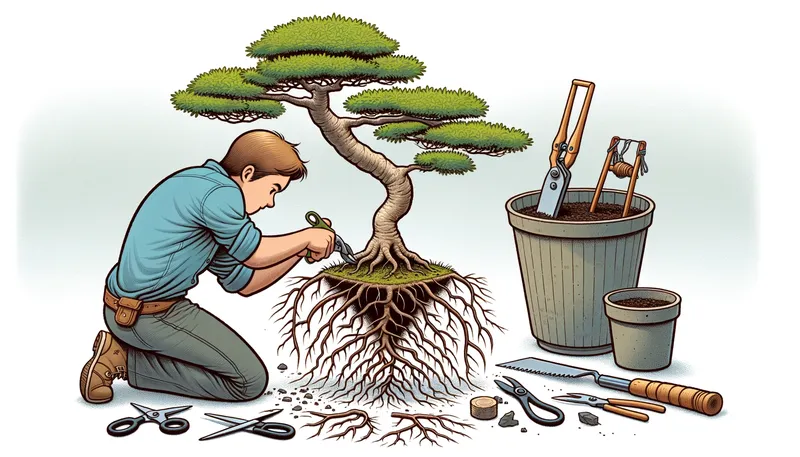
To cultivate a strong nebari in young bonsai trees, it is vital to employ careful techniques and practices. The choices you make regarding the soil mix, pot size, and shape are crucial factors that directly impact the development of strong roots. By providing the right environment, you can encourage lateral growth and create a well-developed nebari.
Here are some key techniques to cultivate a strong nebari in young bonsai trees:
- Root pruning: Regular root pruning helps stimulate the growth of lateral roots, essential for a robust nebari. Trim the roots, keeping in mind the overall balance of the tree, and promote the growth of new roots.
- Repotting: Repotting the young bonsai trees allows you to refresh the soil and encourage the development of a healthy nebari. Choose an appropriate pot size and shape that provides ample room for root expansion.
- Air-layering: Air-layering is another technique that can help establish nebari on young trees. By wrapping a section of the trunk with moss and plastic, you can encourage the growth of new roots, promoting a strong nebari.
The Role of Buttressing
Buttressing is a natural growth process that occurs in trees and plays a crucial role in bonsai cultivation. When it comes to developing a strong nebari, buttressing techniques are essential. By encouraging the growth of horizontal roots close to the soil surface, you can create a stable and attractive base for your bonsai trees.
Root pruning and repotting are some of the buttressing techniques used in bonsai cultivation. By carefully trimming and reshaping the roots, you mimic the natural growth pattern of buttressed trees, allowing your bonsai to develop a strong nebari. These techniques contribute to the overall health and aesthetic appeal of your bonsai trees, ensuring their stability and longevity.
Techniques for Enhancing Nebari
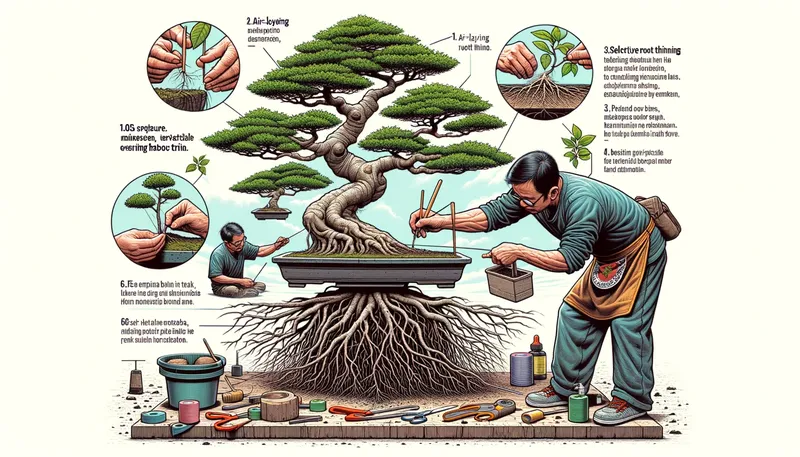
Enhancing the nebari of a bonsai tree is a vital aspect of its development and overall aesthetic appeal. By employing specific techniques, you can promote the growth of a wider and stronger nebari, which adds stability and visual impact to the tree.
Here are some tried and tested techniques for enhancing nebari in bonsai:
- Root pruning: By selectively cutting back the roots, you encourage lateral growth and create a more pronounced nebari. Be mindful of the timing and extent of root pruning to prevent excessive stress on the tree.
- Repotting: When repotting your bonsai, you have the opportunity to manipulate the root system and enhance the nebari. Carefully spread out the roots and position them in a desirable manner, ensuring that they radiate from the trunk.
- Thinning or thickening: Adjusting the thickness of specific areas of the trunk can add depth and taper to the nebari. Thinning the upper part of the trunk and thickening the lower part creates a visually pleasing transition.
- Growing sacrifice branches: Sacrifice branches are temporary branches that are allowed to grow freely to stimulate trunk and nebari development. By strategically growing sacrifice branches, you can encourage the growth of new roots and strengthen the nebari.
- Grafting: Grafting involves joining a branch from a different tree onto your bonsai. This technique can be used to introduce new nebari elements, such as thicker roots or additional branches, to enhance the overall structure of the tree.
No products found.
The Nebari in Bonsai Styling
The nebari is a crucial element of bonsai styling, contributing significantly to the overall balance and appearance of the tree. When it comes to creating stunning bonsai masterpieces, bonsai artists meticulously consider the nebari, ensuring that it harmoniously complements the trunk, branches, and overall aesthetic of the bonsai.
A well-developed nebari plays a vital role in enhancing the visual appeal of the bonsai. It provides a sense of age and maturity, grounding the tree and creating a harmonious design. A strong nebari adds stability and weight to the overall structure, elevating the bonsai’s beauty and creating a captivating presence.
When styling a bonsai, the nebari serves as the foundation upon which the entire tree is built. It anchors the tree, creating a solid visual base and establishing a sense of permanence and authenticity. A well-formed nebari ensures that the bonsai stands out and demands attention, becoming the centerpiece of the composition.
To achieve an exceptional nebari in bonsai styling, attention to detail is key. Bonsai artists carefully observe and select trees with naturally impressive nebari as a starting point. They then employ various techniques to develop and refine the nebari, ensuring its harmony with the overall aesthetic of the bonsai.
Techniques for Enhancing Nebari in Bonsai Styling:
- Root Pruning: Pruning the roots of the bonsai to encourage lateral growth and improve the overall nebari development.
- Repotting: Regularly repotting the bonsai to stimulate root growth and facilitate the expansion and refinement of the nebari.
- Buttressing: Creating a buttressed effect by encouraging horizontal root growth close to the soil surface, strengthening the nebari and adding visual interest.
- Wire Techniques: Strategically wiring the nebari of the bonsai to enhance its shape and create a more visually appealing composition.
- Application of Soil Mix: Utilizing a suitable soil mix that promotes root growth and helps develop a healthy and robust nebari.
The Trunk: Nebari, Tapering, Thickness, and Shape
The trunk of a bonsai tree is a focal point that greatly influences its overall appearance. It is an essential element in creating a well-balanced and aesthetically pleasing bonsai. Let’s explore the key aspects that contribute to the beauty and character of the bonsai trunk: nebari, tapering, thickness, and shape.
Nebari: Stability and Maturity
The nebari, or the roots that spread out at or just below the surface of the soil, provides stability to the bonsai tree and adds to its age and maturity. A well-developed nebari creates a strong foundation and enhances the tree’s overall visual appeal. It should radiate evenly from the trunk, gripping the soil firmly without any gaps.
Tapering: Natural Flow and Distinction
Tapering refers to the gradual reduction in thickness from the base to the apex of the trunk. It creates a natural flow and distinction, giving the bonsai a sense of movement and visual interest. The tapering effect should be smooth and subtle, contributing to the overall balance and harmony of the tree’s design.
Thickness: Character and Style
The thickness of the trunk adds character and style to the bonsai. A thicker trunk can convey a sense of strength and solidity, while a thinner trunk can lend elegance and delicacy. The thickness should be proportional to the size and age of the tree, ensuring a harmonious and visually pleasing composition.
Shape: Artistic Expression
The shape of the bonsai trunk is an artistic expression that reflects the vision of the bonsai artist. It can vary from straight and upright to slanted, cascading, or any other creative form. The shape should align with the overall design and aesthetic goals of the bonsai, contributing to its unique personality and visual impact.
Enhancing Nebari for Age and Beauty in Bonsai
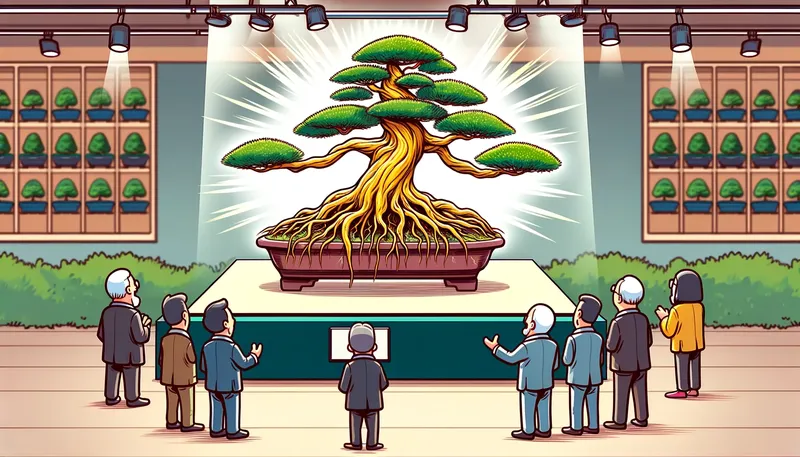
Enhancing the nebari is key to achieving the appearance of age and beauty in bonsai. By correcting any irregularities and promoting proper root development, you can create a more visually appealing and mature bonsai tree. Maintaining a balanced nebari is crucial for the overall aesthetics.
To enhance the nebari, it is important to take note of the details observed in naturally occurring trees. By studying the roots of mature trees, you can gain inspiration for creating an ideal nebari from the start. This approach can save you time and effort in the long run.
Understanding the techniques and principles of nebari enhancement is essential. Root pruning and repotting are effective methods for promoting lateral root growth and establishing a strong nebari. By removing excess root mass and encouraging outward growth, you can create a nebari that exudes both strength and beauty.
Techniques for Enhancing Nebari:
- Root pruning: Carefully trim and remove excess root mass to encourage lateral root growth.
- Repotting: Repot the bonsai regularly to ensure proper root development and facilitate the growth of a well-balanced nebari.
- Buttressing: Mimic the natural growth process of buttressed trees by creating horizontal roots close to the soil surface.
- Tapering: Consider the tapering of roots and adjust their thickness accordingly to create a more natural and appealing nebari.
Conclusion
Nebari serves as the foundation of a bonsai tree, creating a sense of age and maturity. It adds dimensionality to the tree’s design and creates the impression of natural growth. A well-developed nebari contributes to the overall beauty and artistic quality of the bonsai, elevating it from being just a potted plant to a work of living art.
Whether you are a seasoned bonsai cultivator or just starting your journey, paying attention to the nebari is essential. It not only enhances the aesthetics of the tree but also reflects the care and dedication put into its cultivation. So, take the time to cultivate a strong nebari, and watch as your bonsai trees flourish and become true masterpieces.
After this check out our other articles on:
FAQ
What is nebari in bonsai cultivation?
Nebari in bonsai cultivation refers to the roots that spread out at or just below the surface of the soil. It is an essential component of bonsai design as it provides stability, balance, and aesthetic appeal to the overall tree.
Why is nebari important in bonsai cultivation?
Nebari is crucial in bonsai cultivation as it indicates good health, balance, and harmony between the roots and branches. It adds dimensionality to tree design and creates the impression of natural growth. Developing an attractive nebari can take years or even decades to achieve fully.
How does nebari contribute to bonsai aesthetics?
Nebari plays a vital role in bonsai aesthetics as it provides stability and character to the tree. It adds weight, stability, and permanence to the overall visual appeal. A well-developed nebari makes the bonsai stand out and demands attention, emphasizing its artistic quality.
What techniques are used to develop a strong nebari in young bonsai trees?
Developing a strong nebari in young bonsai trees requires careful techniques such as choosing the appropriate soil mix, pot size, and shape. Root pruning and repotting are necessary to encourage lateral growth and create a well-developed nebari. Air-layering can also be used to establish nebari on young trees.
What is the role of buttressing in developing a strong nebari?
Buttressing is a natural growth process in trees that provides stability and support. In bonsai cultivation, buttressing plays a crucial role in developing a strong nebari. Techniques such as root pruning and repotting help mimic the natural growth of buttressed trees and promote the development of a well-developed nebari.
What techniques can be used to enhance nebari in bonsai?
To enhance nebari in bonsai, techniques such as root pruning, repotting, and buttressing are important. These techniques help promote lateral root growth, create a wider and stronger nebari, and achieve the desired tapering effect. Thinning or thickening certain areas of the trunk and using grafting techniques can also aid in nebari enhancement.
How does nebari contribute to bonsai styling?
Nebari is an essential aspect of bonsai styling as it contributes to the overall balance and appearance of the tree. A well-developed nebari provides a sense of age and maturity, grounding the tree and creating a harmonious design. Bonsai artists carefully consider the nebari when creating their masterpieces, ensuring it complements the trunk, branches, and overall aesthetic of the bonsai.
What factors are important in the trunk of a bonsai tree?
The trunk of a bonsai tree plays a crucial role in its overall appearance. Nebari, tapering, thickness, and shape are important factors in creating a well-balanced and aesthetically pleasing bonsai. Nebari provides stability and adds to the tree’s age and maturity, while tapering creates a natural flow and distinction between the base and the apex of the trunk. Thickness and shape contribute to the character and style of the bonsai.
How can nebari be enhanced for age and beauty in bonsai?
Enhancing nebari in bonsai is key to achieving the appearance of age and beauty. Correcting any irregularities, encouraging proper root development, and maintaining a balanced nebari leads to a more visually appealing and mature bonsai. By understanding the techniques and principles of nebari enhancement, bonsai enthusiasts can elevate the quality of their trees.

